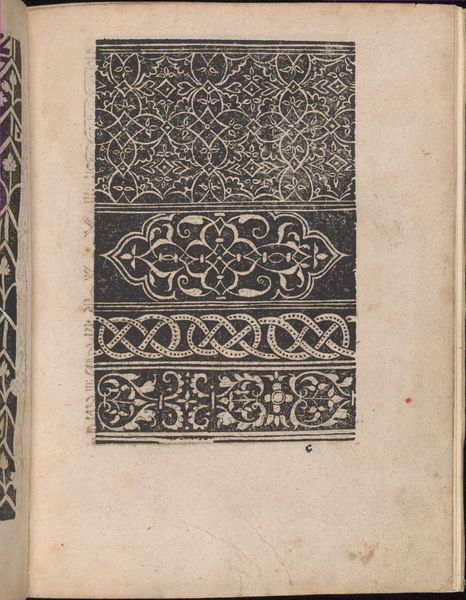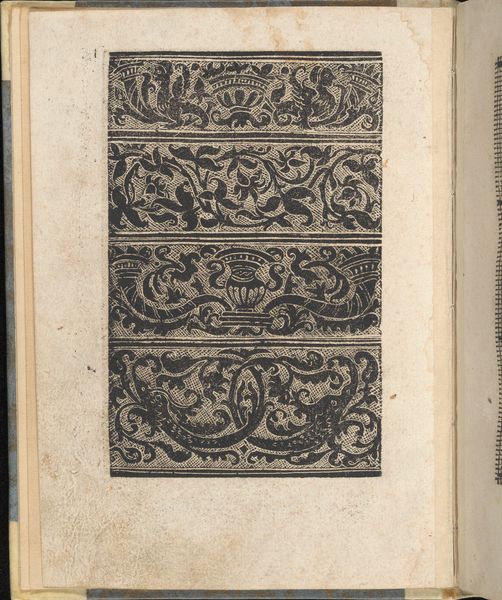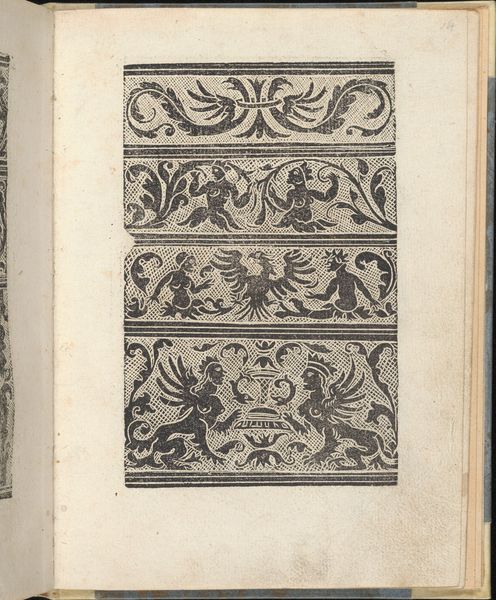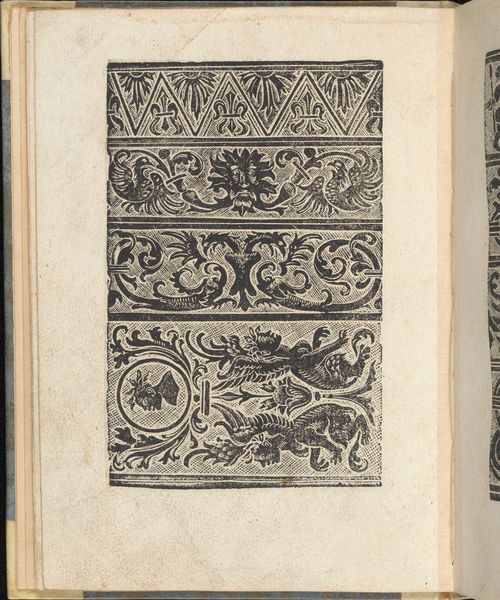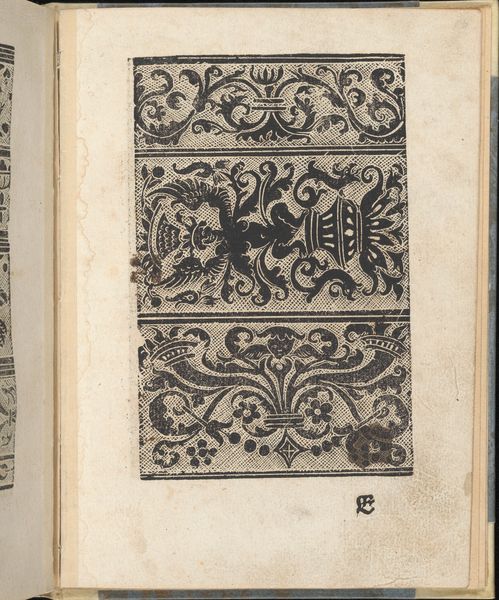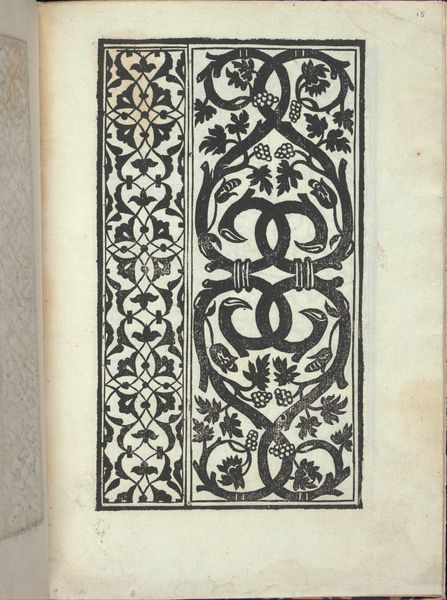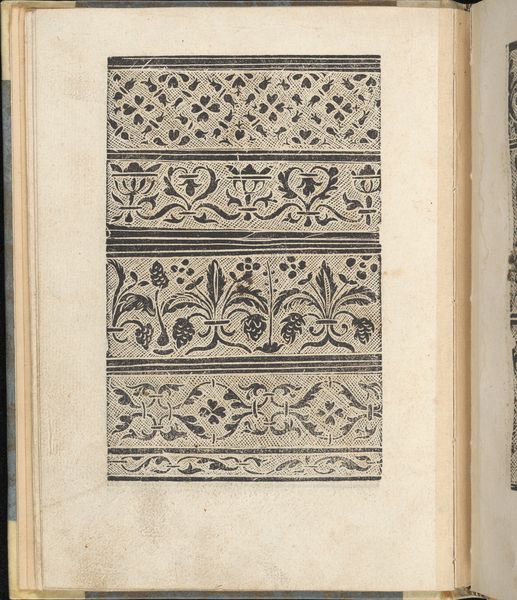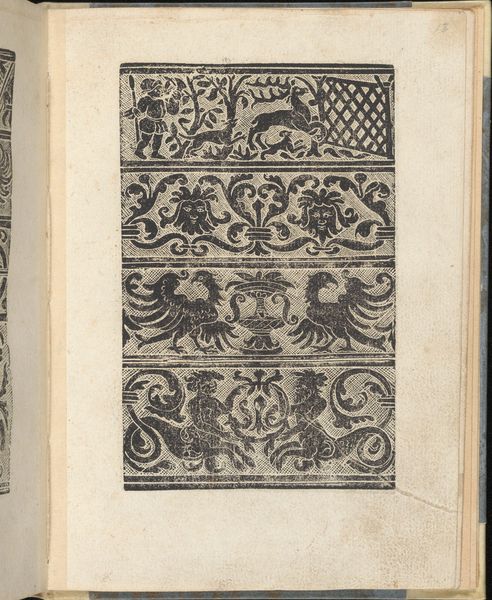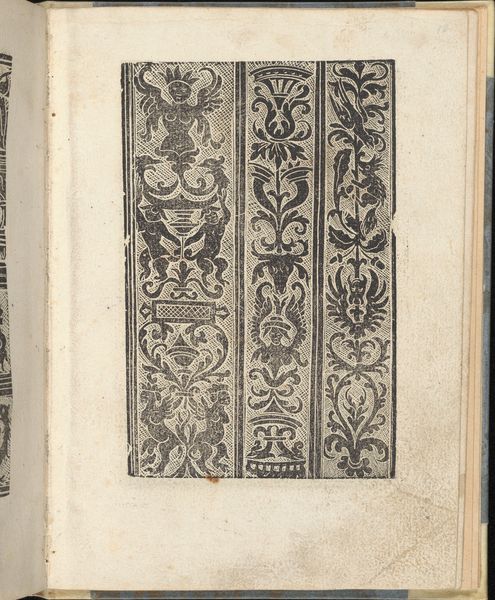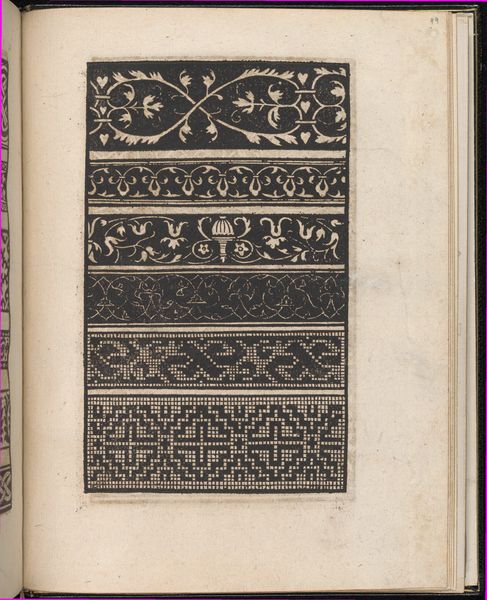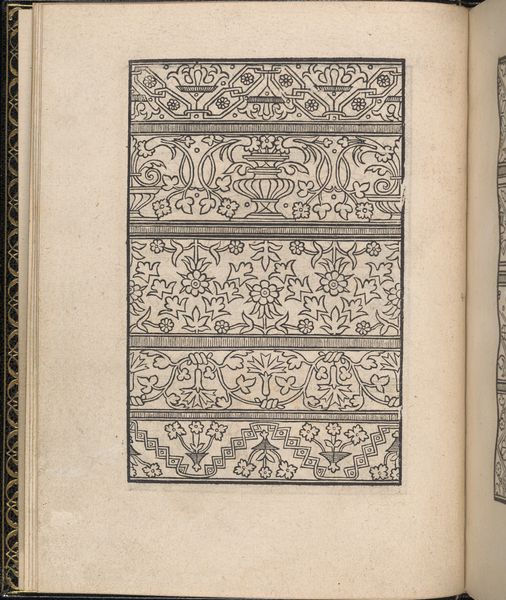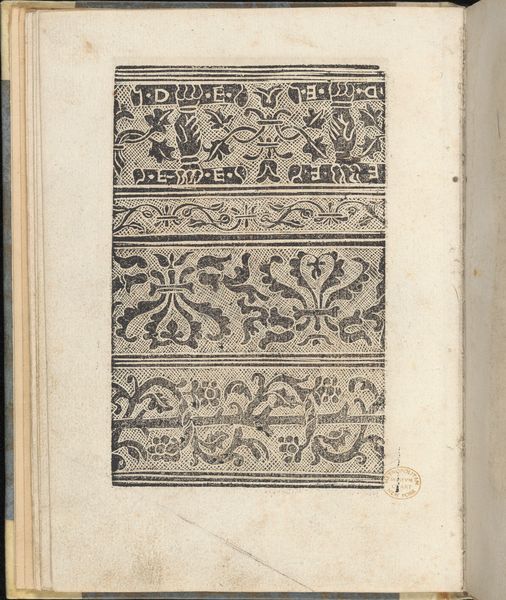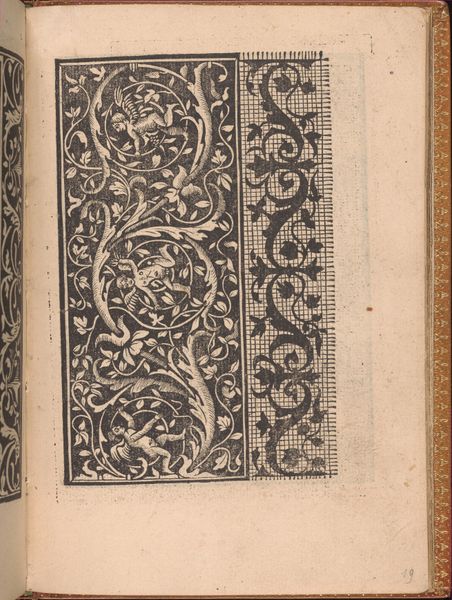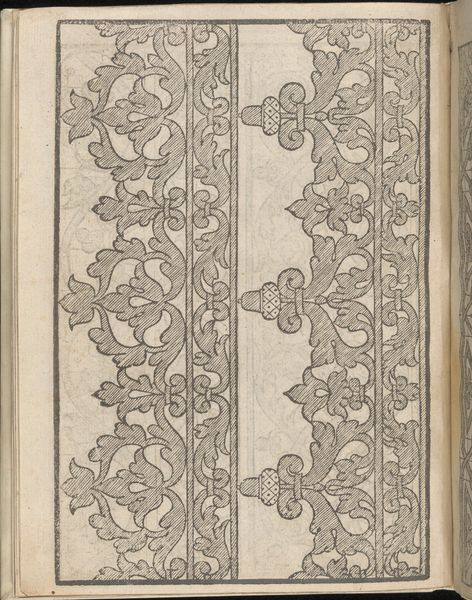
Ein ney Furmbüchlein, Page 16, verso 1520 - 1530
0:00
0:00
drawing, print, woodcut
#
drawing
# print
#
book
#
sketch book
#
geometric
#
woodcut
#
northern-renaissance
Dimensions: 7 7/8 x 6 1/8 in. (20 x 15.5 cm)
Copyright: Public Domain
Curator: Looking at this page, there is an immediate sense of the artisanal hand, like the kind that might construct beauty in order to challenge the chaos of existence. Editor: Absolutely. And what we have here is a page from "Ein ney Furmbüchlein," which translates to "A New Model Book". It's page 16, verso, created in the 1520s or 30s, made with woodcut, which really allows the sharp lines and the geometric patterning to come to life. Curator: Indeed! A Model Book; these geometric friezes serve almost as spells to be cast through repetition—to decorate clothing, weaponry or architecture—permeated the everyday lives of 16th century artisans. You feel the cultural weight being transferred through these linear patterns. Editor: Precisely. The Northern Renaissance, unlike its Italian counterpart, grappled with distinct sociopolitical pressures and this book stands as an incredible document for looking at that. The repetitive designs, they are so much more than mere ornament; they become emblems of trade, wealth, and the rising merchant class, who wielded power through carefully coded visual displays. Curator: It's almost hypnotic in a way, isn't it? How these symmetrical forms create a feeling of continuity? It mirrors the human need for order and stability. Like prayers being meticulously beaded together in meditative, and now practical, use. Editor: That feeling, the desire for continuity through patterns speaks volumes about a society undergoing massive transformation, particularly as guilds consolidated economic power, solidifying hierarchies of inclusion and exclusion. It is almost as though the order expressed visually sought to allay, even suppress, anxiety caused by real-world events. Curator: You have it; it shows, if nothing else, that visual language is always embedded and imbued with more than just decorative elements. Editor: Absolutely, it's the intersection of art, social history, and the burgeoning market economy playing out in each precisely rendered line, giving artisans means of both conforming and signaling autonomy. Thanks for helping me unlock all of the historical data buried here. Curator: Always, my friend, the pleasure of symbology is, in part, collaborative.
Comments
No comments
Be the first to comment and join the conversation on the ultimate creative platform.
